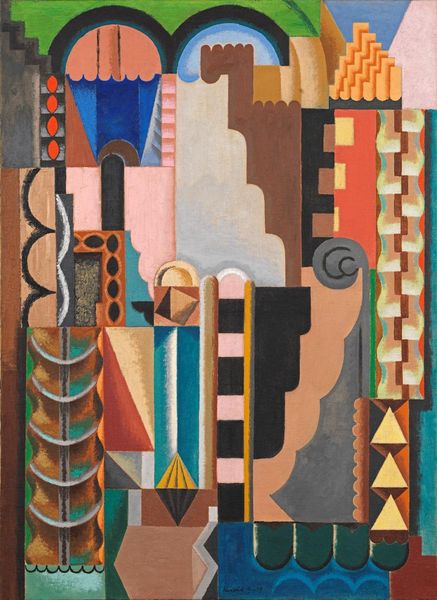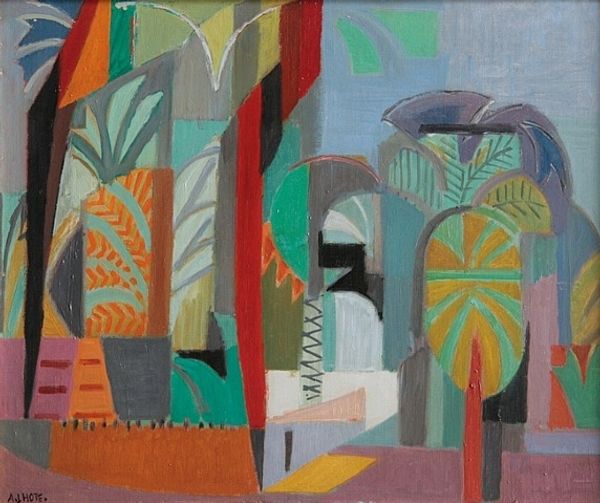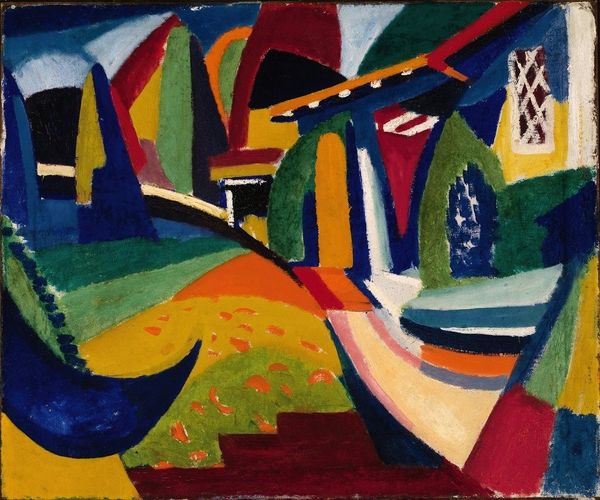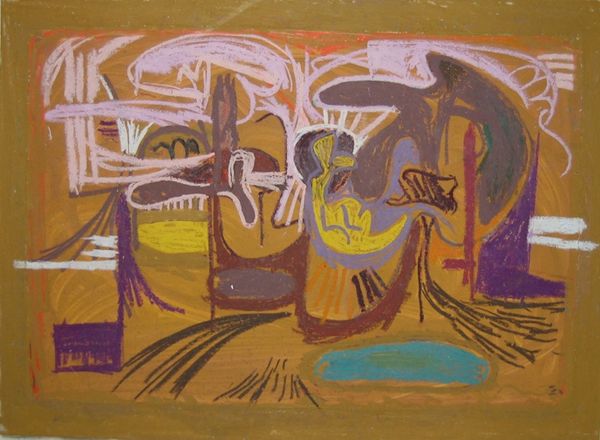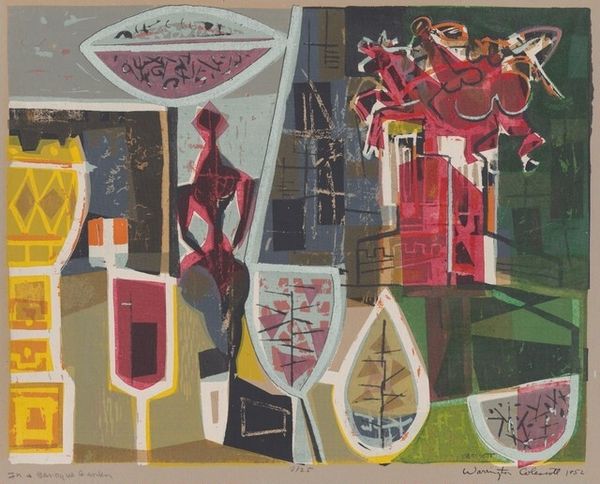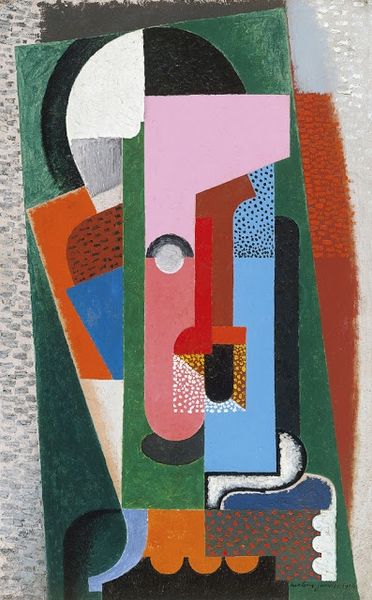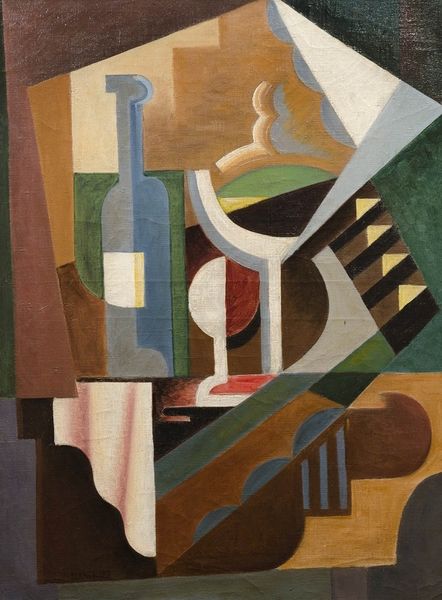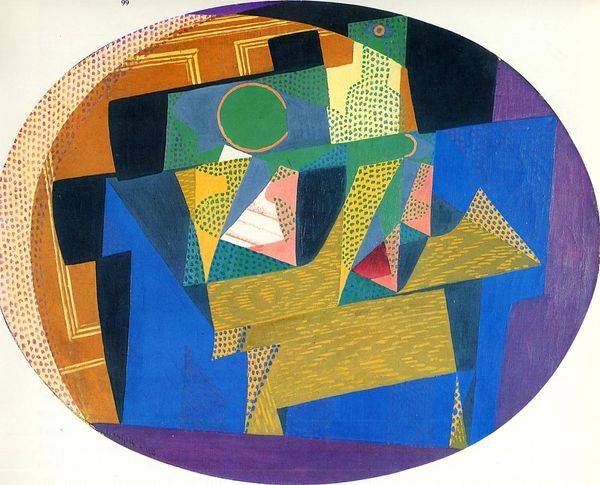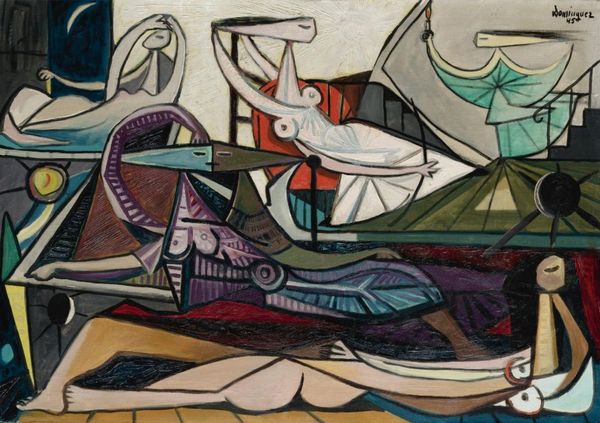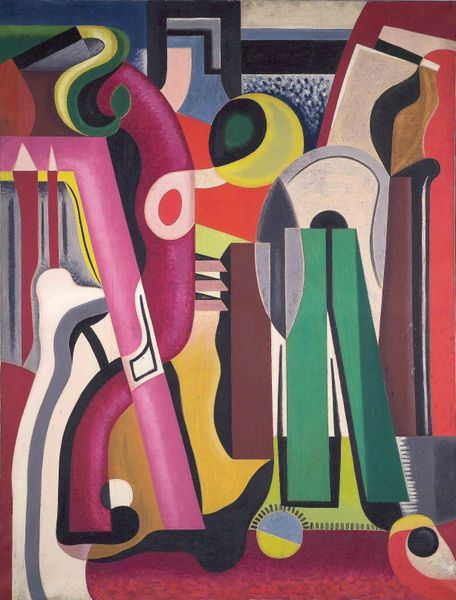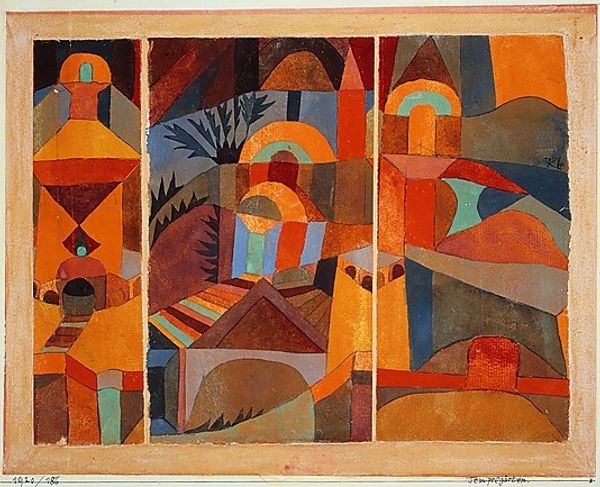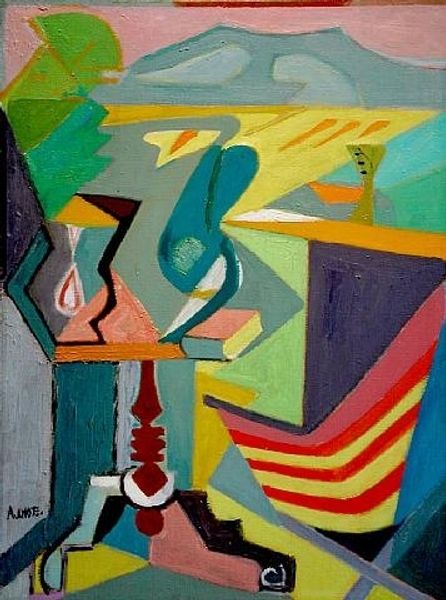
painting
#
cubism
#
painting
#
landscape
#
geometric-abstraction
#
painting art
#
modernism
Copyright: Public domain US
Editor: So, this is Auguste Herbin's "Composition, Landscape at Ceret," painted in 1919. The canvas is alive with geometric shapes. It reminds me of a stage set. What do you see in this piece? Curator: I see a rich tapestry of symbols striving to redefine landscape, wouldn't you agree? Herbin offers a re-imagining of the natural world, viewed through the lens of cultural memory. Note how the recurring triangular shapes evoke mountains, while the concentric circles could represent the sun, each shape layered with emotional significance through time. Editor: I suppose the colors add to that; some are very earthy. Is he trying to ground this abstract landscape in a recognizable reality? Curator: Perhaps he aims not for reality, but recognizability? Color choices echo the Fauvist movement but here they seem coded, acting as mnemonic devices. A kind of visual language building on previous lexicons of color theory. Do you feel a continuity in the visual symbolism of previous landscape paintings here? Editor: That’s a perspective I hadn't considered. I was focused on the flattening effect of the cubist style, rather than the emotional impact that specific colors or shapes may elicit. Curator: Indeed! The dialogue between abstraction and symbol creates a vibrant space. Considering, say, the diamond pattern on the left – might that speak to societal structures as much as aesthetic choices? Editor: Definitely! It shows that there are layers beyond the purely aesthetic. Thanks for showing me how cultural memory and visual language play out in this seemingly abstract landscape. Curator: A landscape re-coded with emotion, I'm glad we took the time to decode the symbolism hidden within.
Comments
No comments
Be the first to comment and join the conversation on the ultimate creative platform.
